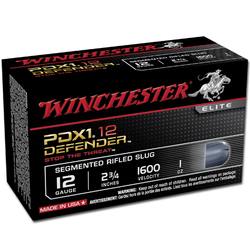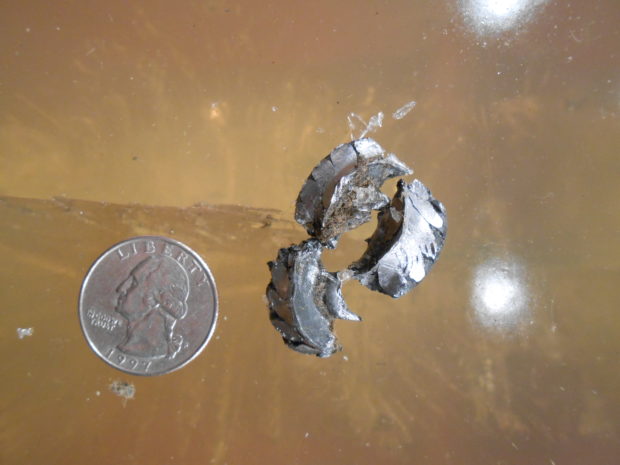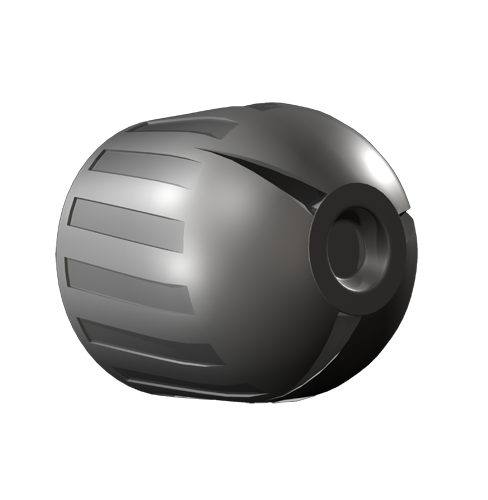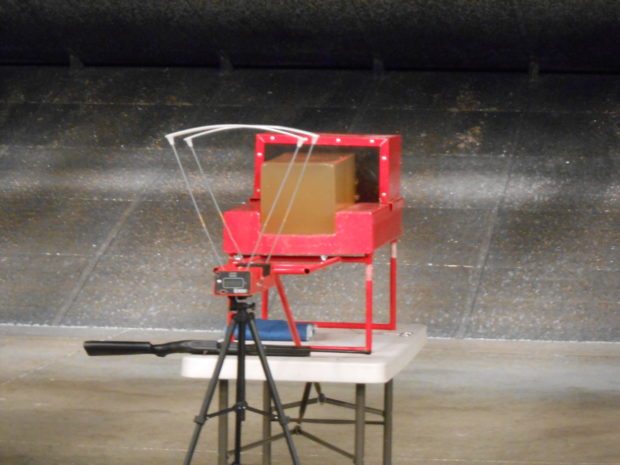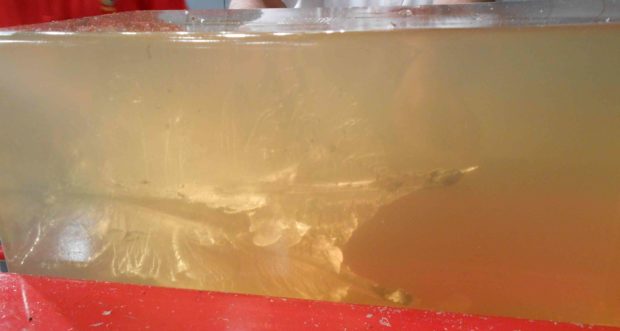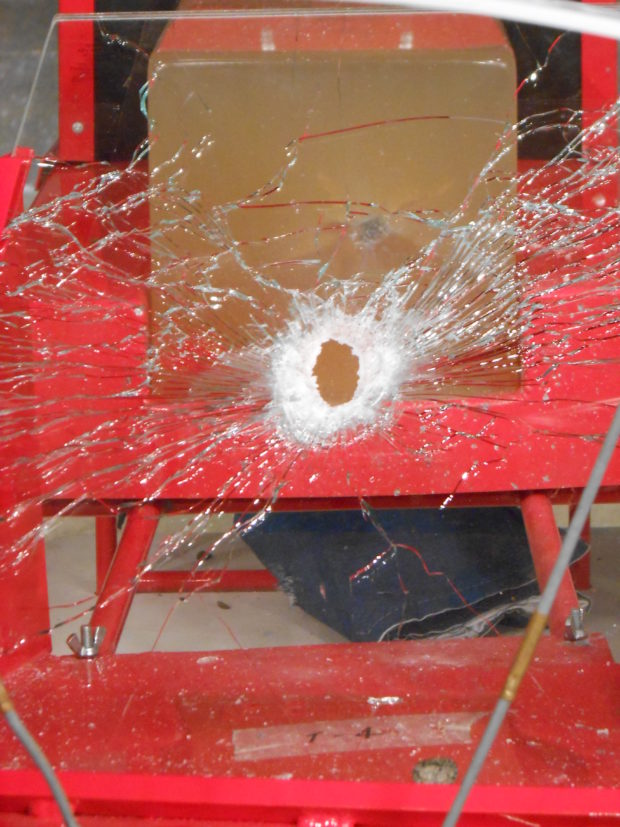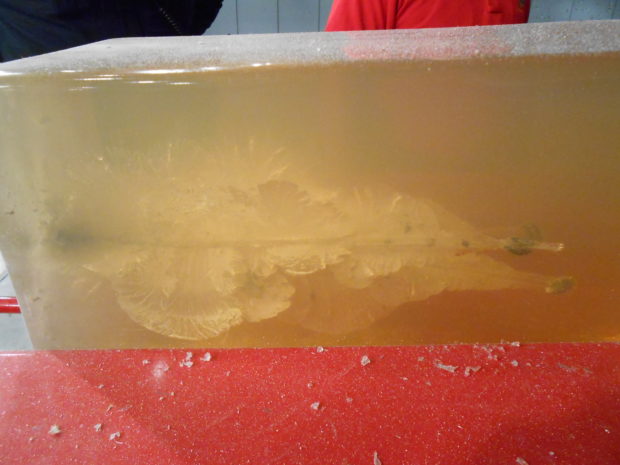Written by: Greg Ellifritz
A couple years ago, I attended a ballistic demonstration held at the Ohio State Highway Patrol Academy. Winchester Ammunition in conjunctions with Vance’s Shooters Supply performed the demonstration to highlight the new Winchester Segmented Slug round. It is available to citizens as the PDX1 and to law enforcement agencies as the Ranger Segmented Slug. The two rounds appear to be identical.
The round is a pre-segmented one-ounce rifled slug. It stays together and performs similarly to other slugs when fired through hard barriers. What’s unique is that when it hits something softer (like flesh) hydraulic forces break the slug into three separate pieces in order to limit penetration and increase stopping power. According to Winchester literature:
“This unique product offers law enforcement officers all of the advantages of a slug and buckshot. It eliminates the need for two different rounds—no more gauging of target distance and no cumbersome transitions during a critical incident. This greatly simplifies the shotgun platform, allowing one round to be used for all situations.
Unique Slug Design segments into 3 pieces when fired into bare, light cloth and heavy cloth covered ballistic gelatin. Slug segmentation causes multiple wound channels, increased trauma and greatly reduces over-penetration often associated with traditional slugs. Provides greater accuracy and a higher percentage of “point-of-aim to point-of-impact” versus that of buckshot. The segmenting slug does not become multiple projectiles until it enters the target.”
After seeing the new slug fired into gelatin, I don’t think it replaces buckshot. But I have replaced my current slugs with this round. It performs as advertised. When it hits bare gelatin or a soft barrier (heavy clothing, wallboard), it breaks into three separate jagged pieces, creating separate wound channels with four to six inches of lateral dispersion. Each piece penetrates 12-13″.
When it hits a hard barrier (like auto glass or sheet metal) it stays together and penetrates like any other slug.
Basically, it performs like a traditional slug when you want it to (where penetration is needed), but it doesn’t over penetrate soft targets. That over penetration has led many police agencies’ reluctance to issue slugs due to concerns about pass-through bullets. Those agencies may be changing some policies when they see the results of the new Segmented Slug.
During the range demonstration, we saw four Segmented Slugs fired into ballistic gelatin according to the FBI’s ballistic testing protocols. Here are the results:
Round 1- Segmented Slug versus bare gelatin. The slug split up as advertised into three pieces. Each piece penetrated 12.5 inches of gelatin.
Round 2- Segmented Slug versus heavy clothing– The gelatin was covered with a four-layer combination of heavy denim fabric per FBI standards. The slug penetrated the heavy clothing and split up in the gelatin. Each fragment penetrated approximately 13 inches.
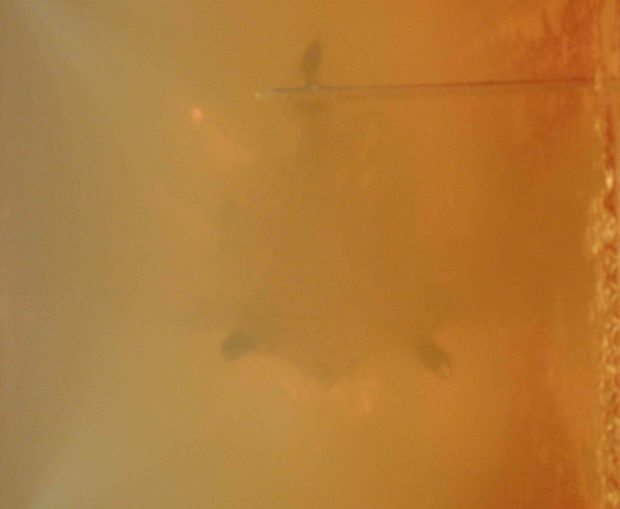
End view of the gelatin block showing 4-6″ lateral dispersion of the three slug segments after penetrating heavy clothing
Round 3- Segmented Slug versus auto glass. A piece of windshield automotive glass was placed in front of the gelatin. The slug penetrated the glass and stayed together, ultimately penetrating the entire 18 inch gelatin block and coming to rest just beyond it. The recovered slug retained 75% of its initial weight.
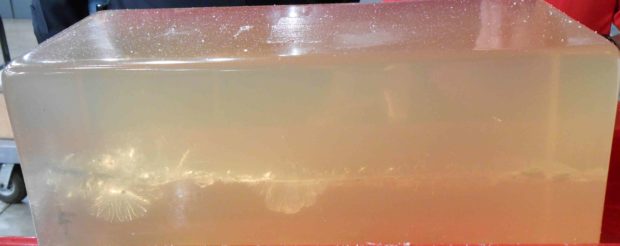
The slug stayed together and penetrated the entire 18″ block of gelatin after it passed through glass
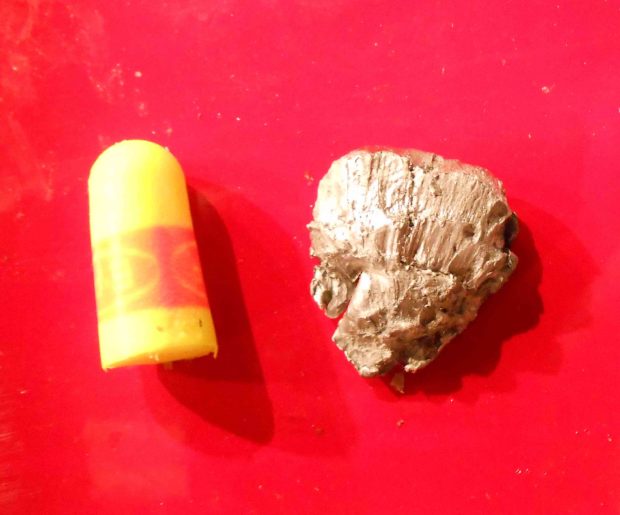
The slug after passing through windshield glass and 18 +” of gelatin. Ear plug showed for size comparison
Round 4- Segmented slug versus wallboard. The slug passed through two layers of drywall before entering the gelatin. It again broke into three pieces and penetrated 13.5 inches.
According to the Winchester rep who conducted the demonstration, performance against drywall is inconsistent. It seems that drywall is a borderline material. Sometimes the slugs split up and sometimes they stay in one piece. If the slugs hit plywood, sheet steel, or a 2×4 they will not split up.
I contacted Winchester and requested some of the segmented slugs for test and evaluation. They sent my 50 rounds. I fired 30 slugs through a department-issue Benelli M-1 (18.5 inch barrel and ghost ring sights) from a variety of different ranges and shooting positions. There were no malfunctions.
The slugs hit at the same point of impact as standard Winchester one-ounce Foster-style slugs. The slugs hit point of aim/point of impact out to about 50 yards. They started dropping after that (as most slugs do) and hit about three inches low at 75 yards. Accuracy was comparable to other slugs fired through non-rifled barrels. My best 3-shot group at 75 yards measured about four inches across.
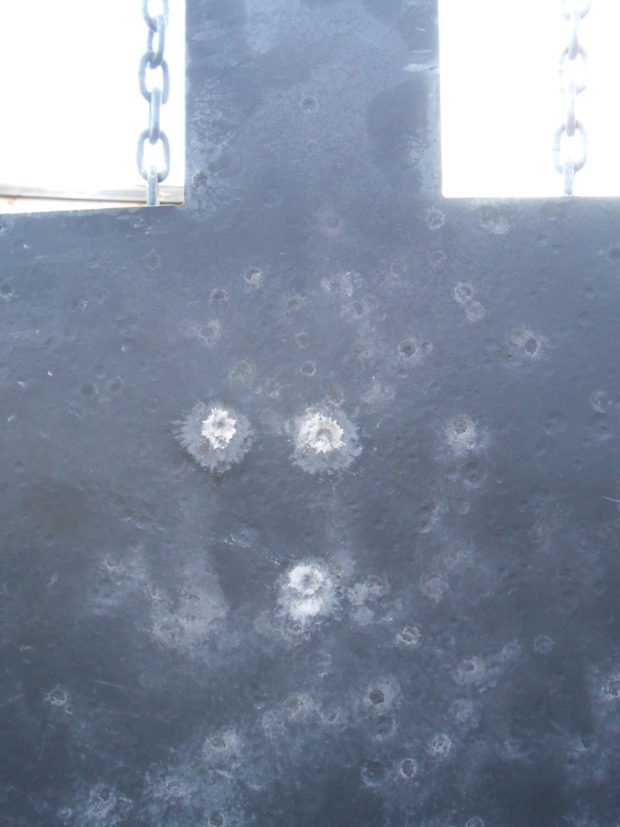
Segmented slug…3-shot group on steel silhouette at 75 yards. I was aiming for the junction of the head and body.
I think this round is a great addition to the the law enforcement or home defense armory. It has all the advantages of a traditional slug with minimal risk of over penetration. Hunters of deer-sized game should find it effective as well. These are the slugs I’m now loading in the sidesaddle of my home defense Benelli shotgun. I think they would be a great choice for anyone who wants the superior ballistic performance of a rifled slug without some of the traditional downsides. Winchester has a winner!
.

